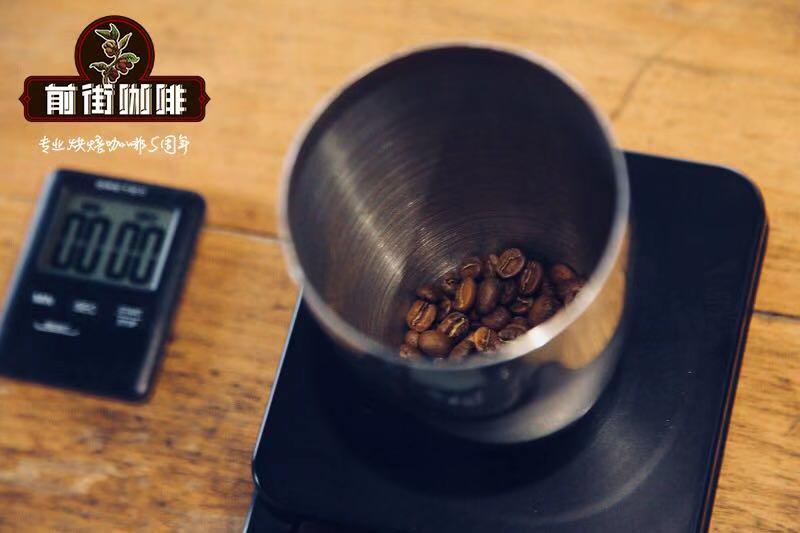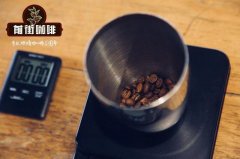Uganda coffee beans processing Uganda sun coffee flavor characteristics processing plant introduction

Professional coffee knowledge exchange more coffee bean information please follow the coffee workshop (Wechat official account cafe_style)
Qianjie-special solarization micro-batch of Mary sweet processing plant, Uganda
Special Solar Micro-batch UGANDA KAWACOM MALIBA NATURAL DRIED COFFEE from Uganda Mary Sweet processing Plant
Origin: Mt.Rwensori Region, Kasese, Uganda
Bean seed: SL14 & SL28
Processing plant: Maliba Washing Station
Altitude: 1800 meters+
Handling method: Natural Process
Flavor: blueberry, tropical fruit, rum fermented flavor
The Maliba coffee processing plant is located on the slopes of Ruwenzori in the Casese region on the border between the Congo and Uganda, and the Maliba area is mainly composed of soft volcanic soil. The area is rich in mineral soil, surrounded by a wide range of forest vegetation and much of the water flowing from the mountains. The favorable natural environment makes it possible to grow coffee for two seasons a year. Although people from different races live in Casese, they all have the history and background of coffee cultivation.
The Maliba Coffee processing Plant's boutique coffee plan originated in 2017, starting with an experiment on the Drugar coffee plot around the processing plant, which focuses on growing cheap, low-quality sun-cured coffee. At the beginning of the implementation of the boutique plan, we should start with the improvement from the two aspects of planting altitude and the maturity of coffee cherries: only all red fruit coffee cherries with sufficient maturity and growing above 1800 meters were selected for post-processing.
In the post-treatment, using the exquisite sun treatment, the washed high-quality coffee cherries were placed on the African bed off the ground and dried for about 15 days. In this process, the coffee is rolled artificially and regularly to ensure the stability and consistency of drying and to avoid mildew.
In addition to the above boutique coffee projects, Maliba processing plants are constantly improving the level of planting, such as the UTZ certification system that has just been passed, and the organic planting system that will be used in the next season.
In short: everything is just for sharing and communication.
END
Important Notice :
前街咖啡 FrontStreet Coffee has moved to new addredd:
FrontStreet Coffee Address: 315,Donghua East Road,GuangZhou
Tel:020 38364473
- Prev

The flavor of African Ugandan coffee Uganda Mangdie coffee the unique flavor of anaerobic solarization
Professional coffee knowledge exchange more coffee bean information please follow the coffee workshop (Wechat official account cafe_style) front street-Uganda Mangdie anaerobic fermentation sun a lot of people have a big misunderstanding about Ugandan coffee, that is, they think that it is full of inferior Robusta varieties of coffee, so few people realize that there are serious Arabica varieties planted here in Uganda.
- Next

What kind of coffee does Tanzania coffee belong to? the taste of Tanzanian coffee is distinctive.
Professional coffee knowledge exchange more coffee bean information please follow the coffee workshop (Wechat official account cafe_style) front street-Tanzania coffee flavor introduction Tanzania and Ethiopia are relatively close to the geographical location and Kenya has a public border, therefore, Tanzania and coffee have a long history and cultural ties. In the 16th century, the Hayes brought coffee from Ethiopia.
Related
- Beginners will see the "Coffee pull flower" guide!
- What is the difference between ice blog purified milk and ordinary milk coffee?
- Why is the Philippines the largest producer of crops in Liberia?
- For coffee extraction, should the fine powder be retained?
- How does extracted espresso fill pressed powder? How much strength does it take to press the powder?
- How to make jasmine cold extract coffee? Is the jasmine + latte good?
- Will this little toy really make the coffee taste better? How does Lily Drip affect coffee extraction?
- Will the action of slapping the filter cup also affect coffee extraction?
- What's the difference between powder-to-water ratio and powder-to-liquid ratio?
- What is the Ethiopian local species? What does it have to do with Heirloom native species?

